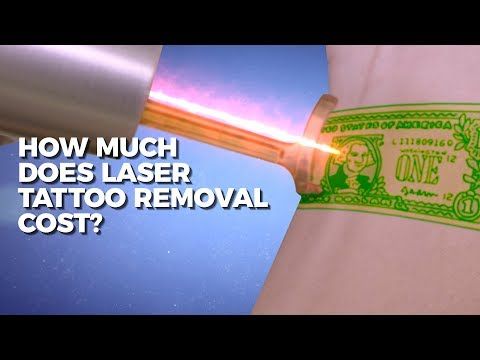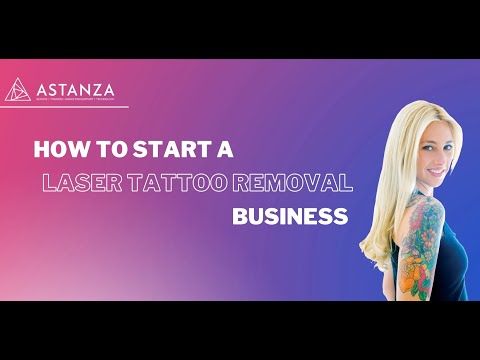The Ultimate Guide to Understanding Tattoo Removal Cost
Deciding to remove a tattoo can leave you wondering about the cost. The average price for zapping away body art hovers around $3,500, but it’s not set in stone. This guide will lay out what affects prices and how to plan financially for clean skin.
Keep reading to clear up the mystery of tattoo removal expenses!
Key Takeaways
- Factors such as the number of treatments, tattoo size, skin type, and removal method all influence the cost of tattoo removal.
- The Kirby – Desai Scale Score is used to estimate the number of sessions required for laser tattoo removal based on various factors like ink color and skin type.
- Advanced technologies like PiQo4 laser treatment, targeted lasers, and smart wavelength contribute to more effective and efficient tattoo removal with potentially lower overall costs.
Factors That Influence Tattoo Removal Cost
The number of treatments required, the size and age of the tattoo, skin type, and the chosen removal method all play a role in determining the overall cost of tattoo removal. Understanding these factors will help you estimate how much your specific tattoo removal treatment may cost.
Number of treatments
Deciding how many sessions you’ll need for tattoo removal isn’t always straightforward. Several treatments are often required, and the total number could vary greatly depending on factors like the tattoo’s age, colors, and your body’s response to treatment.
Typically, laser tattoo removal procedures take place over several months with intervals of six to eight weeks between each session to allow for healing.
As a rule of thumb, smaller tattoos might require fewer treatments than larger ones. For example, in some cases, a small tattoo removal may cost less because it can be achieved in fewer sessions compared to large or detailed designs.
Keep in mind that complete laser tattoo removal averages around $3,500 overall but knowing your specific needs is essential before estimating your total investment. Next up: Understanding how the Kirby-Desai Scale Score affects your treatment plan.
Kirby-Desai Scale Score
To determine the estimated number of treatments needed for laser tattoo removal, clinicians use the Kirby-Desai Scale Score. This scoring system considers six factors: skin type, location of the tattoo, ink color, amount of ink in the skin, scarring or tissue change due to tattooing, and layering.
By evaluating these elements, a practitioner can estimate the number of sessions required and provide an accurate cost assessment based on the complexity and depth of pigment within your tattoo.
Factors such as intricate designs with multiple colors or tattoos situated in difficult areas may result in a higher Kirby-Desai Score and hence necessitate more treatments to achieve satisfactory results.
Professionals utilize this standardized scale to assess how challenging it will be to remove your specific tattoo. Depending on your individual score from this evaluation tool, you can gain a realistic perspective on what kind of investment you need to make for successful removal.
Tattoo size
Tattoo size significantly impacts the cost of removal. Smaller tattoos generally require fewer treatments and less laser time, resulting in lower overall costs. Conversely, larger tattoos may need more sessions and increased resources, which can raise the total price for removal.
The size of a tattoo also affects the complexity of the removal process; intricate designs or larger pieces with multiple colors may require additional treatment sessions and specialized techniques, further influencing the overall expense.
The complexity of removing larger tattoos with different colored inks contributes to higher costs. Larger and more detailed designs often necessitate more extensive laser treatment, increasing both time and resources required for complete removal.
Skin type
Moving on from considering the size of the tattoo, another crucial factor that influences tattoo removal cost is skin type. Different skin types react differently to laser treatment, which can impact both the number of sessions required and overall cost.
For instance, individuals with lighter skin tones typically respond better to laser treatment, requiring fewer sessions in comparison to those with darker skin tones. This variation in response can affect the total expense for complete tattoo removal.
Understanding your specific skin type and how it may influence the effectiveness of laser removal can help manage expectations and estimate potential costs more accurately. It’s important to consult a professional who can evaluate your unique situation and provide personalized insights based on your skin type.
Removal method (e.g. laser, surgical, etc.)
The cost of tattoo removal can also be influenced by the removal method used, such as laser or surgical techniques. Here are some details about different tattoo removal methods:
- Laser tattoo removal: This is the most common and effective method, using high-intensity light beams to break up the ink particles in the skin.
- Surgical excision: This involves cutting out the tattooed skin and stitching the surrounding skin back together, suitable for smaller tattoos.
- Dermabrasion: This technique uses a high-speed brush to remove the upper layers of the skin where the tattoo is located.
- Chemical peels: Strong acid solutions applied to the skin that cause it to blister and eventually peel off, taking the tattooed skin with it.
- Non-laser treatments: Such as Intense Pulsed Light therapy (IPL) or other energy-based devices that target the pigment in the tattoo.
The Latest Technology and Techniques for Tattoo Removal
The latest technology and techniques for tattoo removal include the use of PiQo4 laser treatment, targeted lasers, and smart wavelength to effectively remove tattoos. These advancements in technology provide better penetration and results for those seeking tattoo removal.
PiQo4 Laser Treatment
EradiTatt offers PiQo4 laser treatment, a cutting-edge solution for tattoo removal. This advanced technology uses targeted lasers and smart wavelength to penetrate the skin, efficiently breaking down ink particles while minimizing damage to the surrounding tissue.
With this innovative technique, individuals can expect effective tattoo removal with minimal discomfort and shorter recovery periods.
The cost of PiQo4 laser treatment varies based on factors such as the size and complexity of the tattoo but generally falls within competitive pricing at EradiTatt. The clinic provides expert consultation along with before and after images to showcase successful results, allowing individuals to make informed decisions about their tattoo removal journey.
Targeted lasers
The use of targeted lasers in tattoo removal treatments allows for precise and efficient removal of the ink. These advanced lasers can specifically target the pigments in the tattoo, resulting in more effective results with fewer sessions needed.
The smart wavelength and penetration depth of these targeted lasers ensure that they can address various colors and types of tattoos, providing better outcomes for individuals seeking to remove their tattoos.
With this technology, individuals can expect improved results while minimizing potential side effects.
Utilizing targeted lasers for tattoo removal also offers a more specialized approach based on individual needs, leading to potentially lower costs over time as fewer sessions may be required.
Smart wavelength
Transitioning from targeted lasers to smart wavelength, it’s essential to understand how the use of smart wavelengths in tattoo removal technology can impact the overall cost and effectiveness of the procedure.
With advancements in laser technology, smart wavelengths are now being utilized for more precise and efficient tattoo removal. This innovative approach allows for better targeting of ink pigments while minimizing damage to surrounding skin.
Smart wavelength technology is designed to specifically target different ink colors within tattoos, enabling more thorough removal with fewer sessions. By adjusting the wavelengths according to specific ink colors, this technique enhances the precision and efficacy of laser tattoo removal.
Penetration
Smart wavelength lasers have the capability to penetrate deeper into the skin, targeting the tattoo ink more effectively. This ensures that even tattoos located deeper in the skin can be successfully removed with fewer treatment sessions.
The level of penetration plays a crucial role in determining the success and efficiency of laser tattoo removal, offering a more comprehensive solution for individuals seeking complete removal.
Moving on from penetration, let’s explore how different factors influence who is a good candidate for tattoo removal.
Who is a Good Candidate for Tattoo Removal
When considering tattoo removal, factors such as skin tone considerations, the age of the tattoo, and realistic results and expectations play a key role in determining who is a good candidate for the procedure.
To learn more about finding the best deal for tattoo removal and taking the next steps, keep reading!
Skin tone considerations
Different skin tones can impact the effectiveness and cost of tattoo removal. Generally, those with lighter skin tones tend to have better results as the laser can more precisely target the tattoo ink.
On the other hand, people with darker skin may require more sessions to achieve similar results due to a higher risk of pigmentation changes or scarring. Lighter skin types respond better to laser treatments, which may translate into fewer sessions needed for complete removal.
Understanding how your skin tone influences tattoo removal costs and outcomes is essential when considering this procedure. Factors such as melanin levels in the skin can affect how well it responds to laser treatment.
It’s important for individuals with varying skin tones to consult with experienced professionals who can provide tailored advice based on their unique needs and concerns.
Age of the tattoo
The age of the tattoo is a significant factor in determining the cost of removal. Older tattoos are generally easier and less expensive to remove compared to newer ones due to natural fading over time, making them quicker to treat with laser removal methods.
Additionally, older tattoos often require fewer sessions, resulting in lower overall costs for those seeking tattoo removal services.
Understanding how the age of your tattoo impacts the removal process can help you estimate potential costs and make informed decisions about pursuing treatment. When considering options for tattoo removal, taking into account the age of your tattoo will provide valuable insight into what to expect throughout the process and during consultations with professionals.
Results and expectations
As you anticipate the results of your tattoo removal sessions, it’s essential to manage your expectations realistically. Understanding that complete removal may take multiple treatments allows for patience in the process.
On average, individuals can expect to see noticeable fading after 4-6 laser sessions but achieving full eradication could require more treatments for complex or multi-colored tattoos.
Additionally, ensuring proper aftercare following each session is crucial to optimize results and minimize potential complications.
Experiencing some discomfort during and after treatment is common, but this is typically manageable with over-the-counter pain relief options and prescribed medications if necessary.
It’s important to note that while tattoo removal technology has advanced significantly, complete tattoo erasure cannot be guaranteed in every case due to variations in skin type and ink composition.
Payment Options for Tattoo Removal
Financing plans and discounts are available for tattoo removal, making it more affordable for those seeking to remove their tattoos. Some clinics may also offer free or low-cost options for individuals in need of assistance with the cost of tattoo removal.
Financing plans
Financing plans for tattoo removal can make the process more affordable for individuals. Here are some options to consider:
- Some clinics offer payment plans that allow clients to pay for their laser tattoo removal in installments over time, making it easier to manage the cost.
- Many financing companies provide loans specifically for medical procedures, including tattoo removal, with flexible repayment options and competitive interest rates.
- Some tattoo removal clinics offer discounts or package deals when purchasing multiple sessions upfront, reducing the overall cost of treatment.
- Patients may also explore healthcare credit cards that specialize in covering medical expenses, such as tattoo removal, allowing them to spread out payments without accruing high interest rates.
- Research local and online resources that provide grants or financial assistance programs for individuals seeking tattoo removal but facing financial constraints.
Discounts and price guides
To help manage tattoo removal costs, consider these discounts and price guidelines:
- Look for seasonal or promotional discounts offered by reputable tattoo removal clinics to reduce treatment expenses.
- Some clinics may provide package deals for multiple sessions, offering cost savings compared to paying for individual treatments.
- Research local facilities that offer competitive pricing and utilize a price guide to estimate potential expenses.
- Explore financing options or payment plans to spread out the cost of laser tattoo removal over time.
- Verify if your health insurance covers any portion of the removal costs to further reduce out-of-pocket expenses.
Free or low-cost options
There are several free or low-cost options available for those looking to remove tattoos:
- Community clinics and non – profit organizations often provide discounted or even free tattoo removal services for individuals in need, based on income level and specific criteria.
- Some medical universities offer reduced – rate or pro bono laser tattoo removal treatments performed by supervised students as part of their training programs.
- Research local dermatology practices, as they may occasionally offer discounted rates or promotions for first-time clients, especially during certain times of the year.
- Keep an eye out for special events or fundraisers hosted by tattoo removal facilities, where they may offer free or significantly discounted treatments to the community.
- Look into participating in clinical trials for new tattoo removal technologies, which could provide access to cutting-edge procedures at little to no cost.
Conclusion: Finding the Best Tattoo Removal Deal and Taking the Next Steps.
Discovering the ideal tattoo removal deal requires thorough consideration of various factors. By examining the size, complexity, and colors within your tattoo, you can gain insight into potential costs.
Researching advanced removal methods and technologies will empower you to make well-informed decisions. After assessing all aspects, taking the next steps toward achieving your desired results becomes clearer.
FAQs
1. How much does it generally cost to remove a tattoo?
The average tattoo removal cost varies, with laser tattoo removal pricing depending on the size and complexity of the tattoo—expect higher prices for larger artwork.
2. Are all tattoo removal options priced the same?
No, different tattoo removal techniques can have various costs, so it’s best to get a detailed tattoo removal cost estimate during your consultation based on your specific needs.
3. Will removing a small tattoo be less expensive than a large one?
Yes, typically, small tattoo removal pricing is lower compared to large tattoos due to less time and resources needed for the procedure.
4. What should I expect at a tattoo removal consultation?
During a consultation for Tattoo Removal you’ll discuss your options learn about before and aftercare,and receive an accurate procedure cost estimate based on your unique case.
5. Is there any downtime or recovery process associated with getting a tatoo removed?
After getting laser treatment there’s some healing involved; good aftercare is essential for smooth recovery—all this will be explained in detail by professionals before starting treatments.







